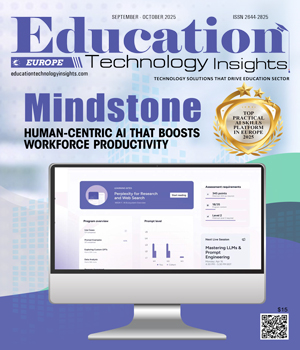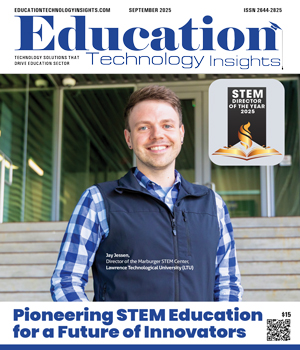THANK YOU FOR SUBSCRIBING
Be first to read the latest tech news, Industry Leader's Insights, and CIO interviews of medium and large enterprises exclusively from Education Technology Insights
Leveraging Technology for Educational Excellence
Tamisha Johnson, Director of Information Technology, Hinds Community College
 Tamisha Johnson, Director of Information Technology, Hinds Community College
Tamisha Johnson, Director of Information Technology, Hinds Community CollegeAs the Director of Information Technology at Hinds Community College, my career has been rooted in continuous learning, collaboration, and problem-solving. Key experiences have shaped my approach to IT leadership, reinforcing the importance of staying updated, fostering cross-departmental collaboration, and developing innovative solutions to complex challenges.
Shaping My Leadership Approach in IT
One of the most influential experiences in my career has been my commitment to staying informed about the latest technology trends. I have learned the importance of looking beyond the confines of my organization to explore new ideas and partnerships. By actively engaging with external networks, I can bring fresh perspectives to tackle the most pressing challenges in our institution. Another critical factor in my leadership is collaboration. Understanding the roles and responsibilities of colleagues outside of IT enables more effective communication and problem-solving. This approach ensures that technology aligns with broader institutional goals, bridging the gap between technical expertise and practical application. Additionally, problem-solving has been a cornerstone of my professional journey. Facing and overcoming challenges has fostered resilience and encouraged me to think more innovatively. Rather than reacting in the moment, I strive to develop strategic, forward-thinking solutions that can withstand the test of time.
Meeting the Diverse Needs of Students and Faculty
Ensuring that IT services effectively support students and faculty across multiple campuses requires a strategic approach. I focus on three key elements to achieve this:
• Robust Infrastructure: A strong and scalable IT framework is essential for maintaining reliable connectivity and cloud services across multiple campuses.
• Security Measures: Protecting sensitive data and ensuring privacy is a top priority. Implementing robust security protocols helps safeguard institutional and personal information.
• Innovation and Adaptation: Staying ahead of technological advancements ensures that IT services remain relevant and effective in addressing evolving educational needs.
Staying Ahead in a Rapidly Evolving Tech Landscape
To keep up with the fast-changing world of technology, I employ several strategies:
• Continuous Learning: Attending industry conferences, webinars, and networking events provides valuable insights and opportunities for growth.
• Professional Networks: Engaging with industry peers and online communities fosters knowledge-sharing and discussions on emerging technologies.
• Industry Publications: Subscriptions to IT and technology publications offer in-depth analysis and updates on industry trends.
• Vendor Partnerships: Strong relationships with technology vendors provide early access to new tools, training sessions, and product updates.
• User Feedback: Regularly gathering input from faculty and students ensures that IT services are tailored to effectively meet their needs.
Addressing Challenges in Educational Technology Integration
Educational institutions often face significant challenges when integrating technology. Some of the most pressing obstacles I have encountered include:
• Resistance to Change: Comprehensive training programs and clear demonstrations of technology benefits help ease apprehensions and encourage adoption.
• Lack of Professional Development: Ongoing training initiatives ensure educators and staff can effectively integrate technology into their workflows.
• Infrastructure Limitations: Investing in scalable and updated infrastructure addresses common limitations faced by educational institutions.
My Advice for Educational IT Leaders
For those leading IT efforts in educational settings, I offer the following recommendations:
• Foster a Culture of Innovation: Encourage an environment where experimentation with new tools is welcomed and failures are seen as learning opportunities.
• Optimize IT Infrastructure: Investing in reliable and scalable technology ensures seamless operations and future-proof solutions.
• Invest in Professional Development: Continuous training and support empower users to maximize the benefits of new technologies. In a rapidly evolving digital landscape, the role of IT leaders in education is more critical than ever. By staying informed, fostering collaboration, and embracing innovation, we can enhance student learning outcomes and streamline operational efficiency. My insights serve as a guide for educational IT leaders striving to leverage technology for excellence.
Read Also
Empowering Educators through Purposeful, Connected and Transformative Learning
Empowering Students to Lead: A New Vision for Civic Learning
The Director's Playbook: Strategic Digital Transformation in Rual Hyper-Growth Districts
The Art and Architecture of Student Support
From At-Risk to At-Promise: The Language Revolution Higher Education Needs
Teaching Tomorrow: How Western Governors University Is Redefining Teacher Preparation

I agree We use cookies on this website to enhance your user experience. By clicking any link on this page you are giving your consent for us to set cookies. More info

However, if you would like to share the information in this article, you may use the link below:
www.educationtechnologyinsightseurope.com/cxoinsights/tamisha-johnson-nid-3153.html





















